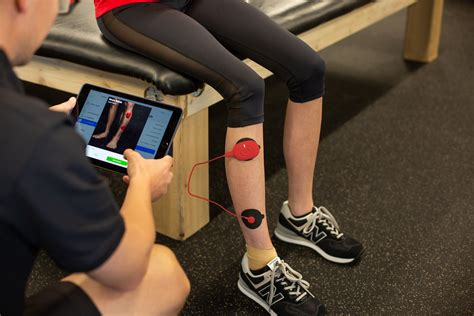Muscle Stimulation: Benefits and Uses
Muscle Stimulation FAQ
What is Electrical muscle stimulation (EMS)?
(April 2019) ( Learn how and when to remove this template message) Electrical muscle stimulation ( EMS ), also known as neuromuscular electrical stimulation ( NMES) or electromyostimulation, is the elicitation of muscle contraction using electric impulses.
How does neuromuscular electrical stimulation work?
Neuromuscular electrical stimulation (NMES) uses an electrical current to cause a single muscle or a group of muscles to contract. By placing electrodes on the skin in various locations, the physical therapist can activate the appropriate muscle fibers.
How does Electrical muscle stimulation work?
Doctors use electrical muscle stimulation to help treat pain and heal injured, weak, or diseased muscles. The electrical currents may help improve blood flow and stimulate the muscle fibers or nerves. Physicians may recommend TENS or EMS depending on the injury or condition. EMS may help the muscles respond to natural signals to contract.
What are the different types of Electrical muscle stimulation?
There are a few types of electrical muscle stimulation. The most common forms include transcutaneous electric nerve stimulation (TENS) and electrical muscle stimulation (EMS). TENS and EMS involve applying electrodes to the skin near an affected muscle to send an electrical current to the area. This current causes rhythmic muscle contractions.
What is Electrical muscle stimulation?
Electrical muscle stimulation, called E-stim, uses special devices to send electrical impulses through the skin to target nerves or muscles. There are a few types of electrical muscle stimulation. The most common forms include transcutaneous electric nerve stimulation (TENS) and electrical muscle stimulation (EMS).
What is neuromuscular and muscular electrical stimulation (NMES)?
Journal of Applied Physiology. 2006; 101 (1):228-240. Neuromuscular and Muscular Electrical Stimulation (NMES) is a modality that sends electrical impulses to nerves which causes the muscles to contract mimicking the action potential coming from the central nervous system. It may be applied during functional movement or without functional movement.
Muscle Stimulation References
If you want to know more about Muscle Stimulation, consider exploring links below:
What Is Muscle Stimulation
- https://www.medicalnewstoday.com/articles/electrical-muscle-stimulation
- https://en.wikipedia.org/wiki/Electrical_muscle_stimulation
- https://www.physio.co.uk/treatments/electrotherapy/electrical-muscle-stimulation-ems.php
- https://www.menshealth.com/uk/building-muscle/a30549804/ems-training-fitness/
Muscle Stimulation Information
- https://www.physio-pedia.com/Neuromuscular_and_Muscular_Electrical_Stimulation_(NMES)
- https://www.verywellhealth.com/electrical-stimulation-2696122
- https://recovatech.com/electrical-muscle-stimulation/
- https://mobilityathlete.com/the-practical-guide-to-electrical-muscle-stimulation-ems-for-athletes/
- https://www.healthline.com/health/pain-relief/e-stim
- https://journals.physiology.org/doi/full/10.1152/physiol.00015.2019
- https://www.tandfonline.com/doi/full/10.1080/02564602.2022.2030815
Explore Related Topics
Alternative Delivery Methods for Medication Options: Beyond Pills and Injections
Are there alternative delivery methods, like transdermal patches, that can be effective in treating erectile dysfunction? Let's explore different options.
How can physiotherapy support post-prostatectomy recovery?
Discover how physiotherapy can aid in the recovery process after a prostatectomy surgery and enhance prostate health.
